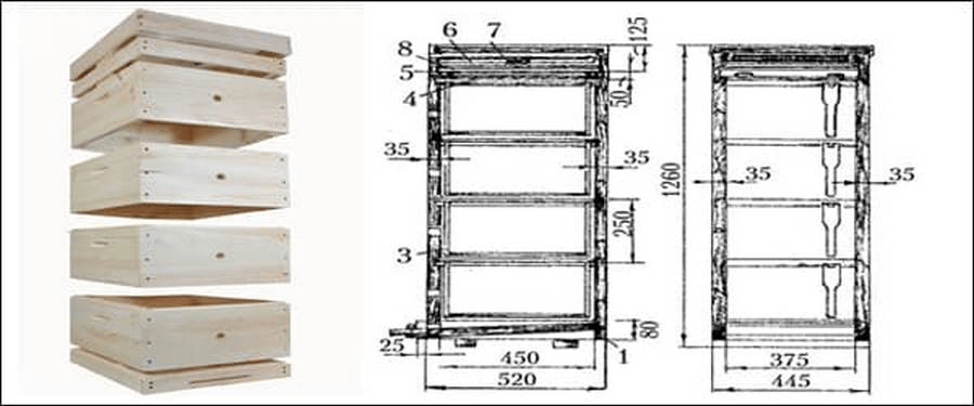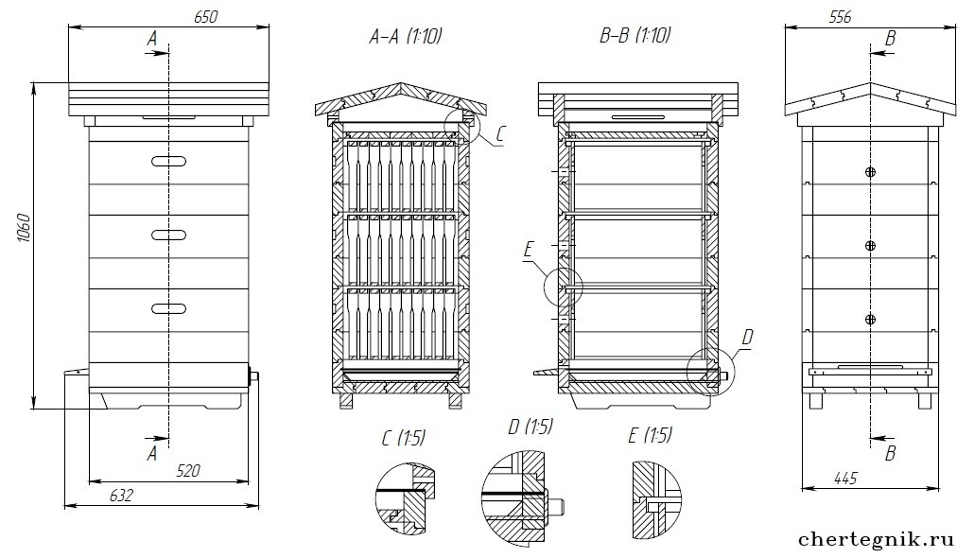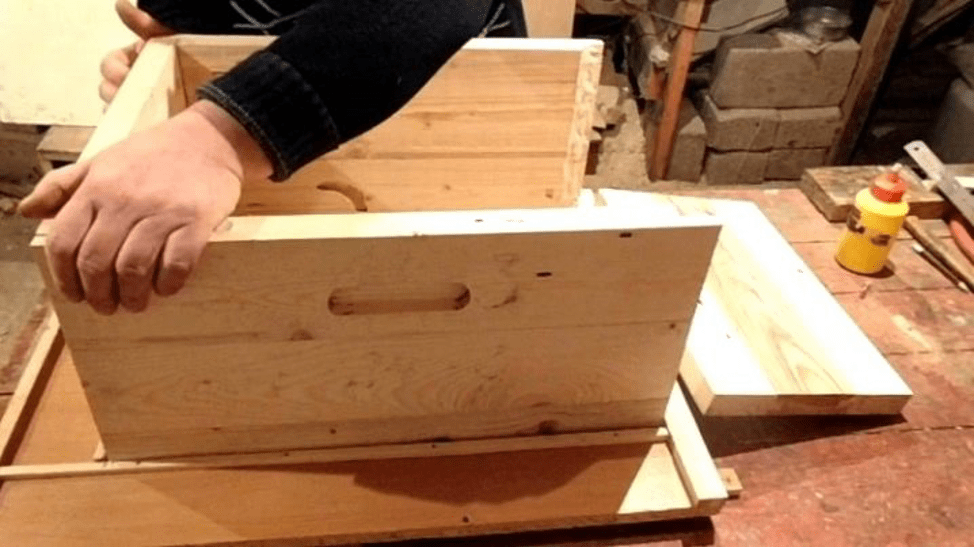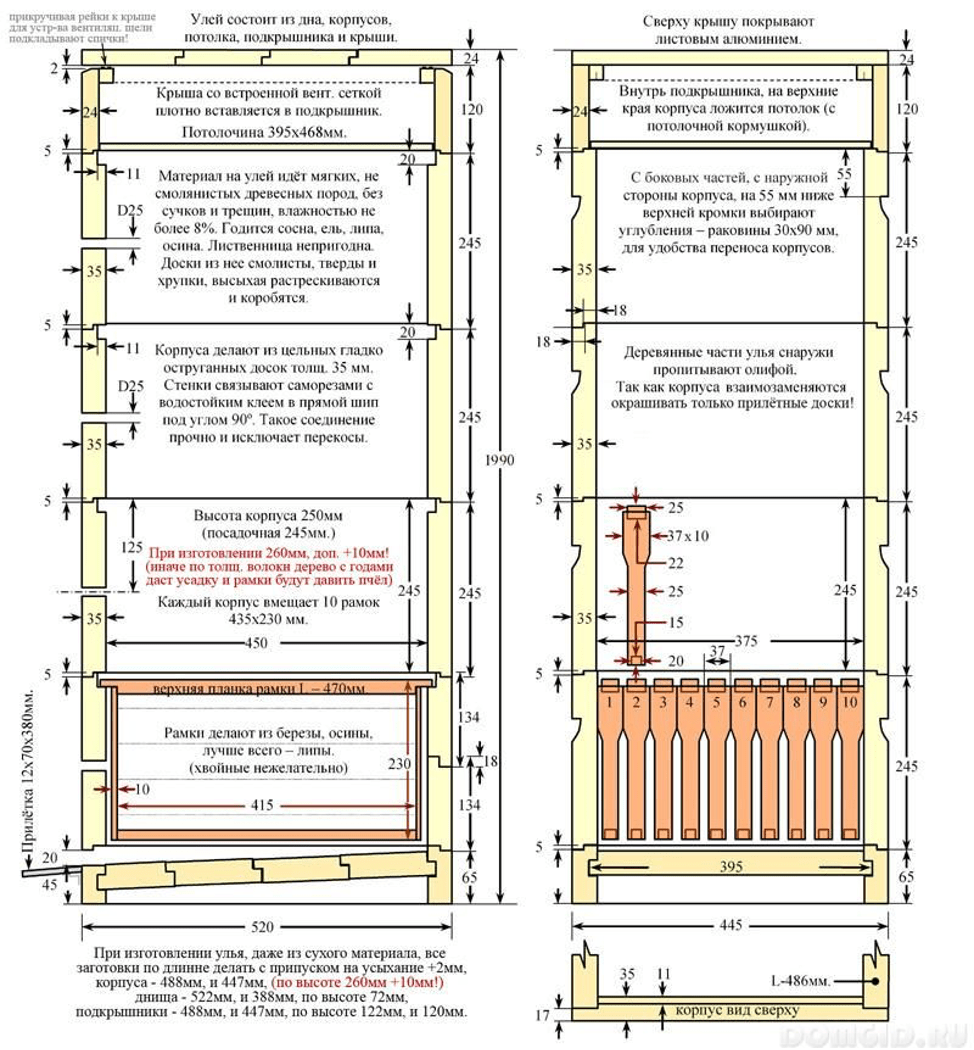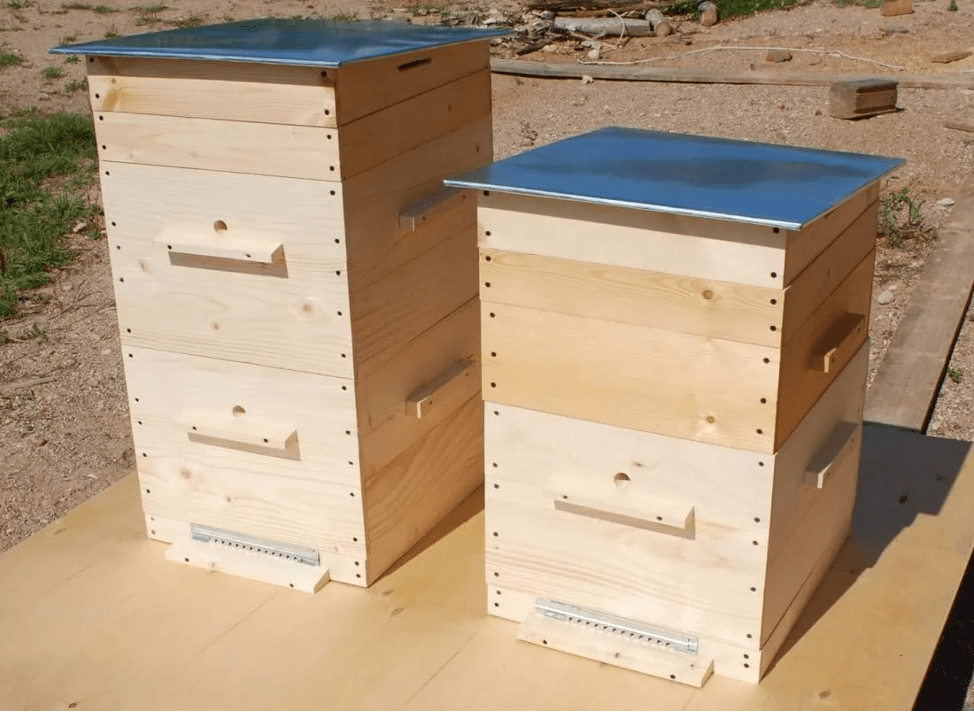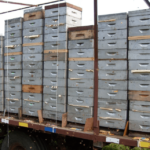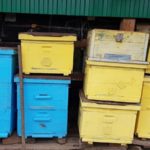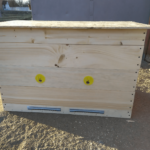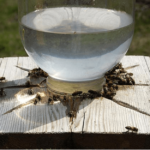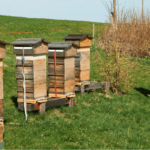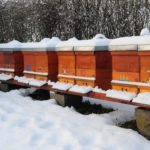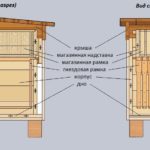During the development of beekeeping, beekeepers have developed several different options for bee homes. A novice beekeeper needs to familiarize himself with the characteristics of each in order to make a choice. The Ruta type hive, also called Langstroth-Rutha, was developed more than 100 years ago in America. Houses have advantages and disadvantages; it is important to take into account the peculiarities of keeping bees in such buildings.
Overview and features of the hive
Rutov bee houses are used in apiaries in different regions of the country because with their help it is possible to increase the efficiency of breeding and maintaining bee families. Features and Specifications:
- these are multi-building buildings;
- the main principle of the internal structure is to create a space as close as possible to what bees are accustomed to;
- to increase the productivity of insects, certain tricks of the internal structure of the houses are used (the beekeeper can change the number of buildings, after freeing up the space, the bees will begin to fill the vacated space);
- the floors of the buildings are not separated by a lid or bottom;
- frames are made small;
- to separate the queen from other bees, she is placed in the lower part of the whole hive and separated by a net.
Attention! It is recommended to rearrange the housings once every two weeks, so these are often installed in regions with warm climates. This way you can avoid hypothermia of the bee colony.
Advantages and disadvantages
Rutov hives are often installed in apiaries due to certain advantages. These include the following:
- increasing the profitability of the apiary due to the rapid increase in the number of insects in the bee family;
- compactness – small buildings are lined up vertically, so the structures take up little space;
- Ruta hives are easy to care for; just study the principles and recommendations of beekeepers.
Attention! Some beekeepers prefer to reduce the degree of human participation in the life of the bee colony. This approach helps simplify the care of the apiary, and often increases the amount of food collected.
Read more about the benefits of Ruth's houses in the next video.
Like other designs, Langstroth-Ruth houses have disadvantages:
- It may be difficult for novice beekeepers to manage multi-hull structures;
- some stores turn out to be quite large; in appearance, the buildings look like a multi-story house;
- To separate the queen bee from the worker bees, additional grids must be used.
These disadvantages are compensated by gaining experience. Therefore, beekeepers do not limit the use of hives of this type.
How to create a Langstroth-Root hive
A beekeeper can assemble a bee house of such a structure independently, having studied the recommendations and the necessary stages of work - preparation, a list of required materials, dimensions and drawings, assembly instructions.
Preparation
The initial stage is planning. You need to do the following:
- decide on the number of frames and bodies of the bee house;
- study the proposed drawings. Attention! Some drawings may not take into account the preferences and wishes of the beekeeper. Therefore, in such cases, it is allowed to make adjustments to the proposed options. It is important to calculate the distances and details before starting to apply markings;
- calculate the amount of materials needed (wood, insulation, nails, etc.);
- prepare a workplace and tools.
After studying the instructions provided, assembling the bee houses will not take much time. It is important to follow safety requirements when working with tools and wood.
Necessary materials
In order to begin assembling Langstroth-Ruth hives, you need to prepare the following materials:
- boards (it is advisable to use fir or wood), thickness - 3-4 cm;
- roof boards. Attention! The roof of the bee house can be assembled from boards - just like the body.Some beekeepers prefer to make the top cover from other materials, for example, plywood with insulation;
- wood beams for the frame;
- To seal the top of the structure, use a tarpaulin or film;
- plywood for creating sheathing;
- nails, screws, self-tapping screws;
- hammer, screwdriver, screwdriver and saw, wood glue.
Attention! Tools are prepared and checked in advance. It is necessary to take into account safety requirements when working with power tools (screwdrivers). In some cases, sandpaper may be needed to sand the boards.
Dimensions and drawings
For a 10-frame hive, ready-made drawings and standard dimensions are used. Common parameters:
- dimensions of the beehive body – 46.2 cm by 40 cm by 24 cm;
- frame parameters – 44.6 cm by 23 cm;
- additional diaphragm element – 1.5 cm thick.
You need to leave a small ceiling space between the upper house and the roof. The distance is necessary in order to protect the bee family from overheating.
Assembly
To use homemade hives, you need to complete several assembly steps:
- assemble the body from boards, connecting the parts with glue;
- on the outside, the elements are sheathed with plywood, the walls are connected with nails;
- cut out the tapholes - upper and lower (an electric jigsaw is suitable for this);
- after assembling the buildings, cut the roof to a suitable size;
- the bottom is installed at the final stage so that there is a distance of at least 5 cm on the front side.
The frames are made of several planks - upper and lower, which are connected by side bars.
Difference from Dadanovskys
Externally, the two types of bee houses are quite similar. Significant differences:
- Dadanovsky dwellings are suitable for cold climates because they do not allow the bees to get too cold;
- Rutov houses are more often used in warm regions - the buildings can be rearranged;
- After winter, Dadan hives will need to replace several frames.
The main difference is that Dadanovsky type hives are easy to care for, easier than Ruth’s houses. These are more suitable for beginner beekeepers.
Bee keeping technology
Rutovsky bee dwellings are characterized by some behavioral features of insects. The key nuances are the following:
- each case holds 10 frames;
- after wintering, the beekeeper needs to install an additional section with foundation;
- then you need to swap sections to activate the growth of the family;
- The bodies in Ruth hives are interchangeable.
The houses are being prepared smoothly for wintering. First, close the distances between the roof and the house, check the availability of the required amount of food (add sugar syrup if necessary). More details about wintering in the next video.
Ruta hives are a type of bee house that has certain advantages and disadvantages. It is not difficult to assemble the structure yourself; it is important to study the features of keeping bees in advance and take into account the recommendations of experienced beekeepers.




